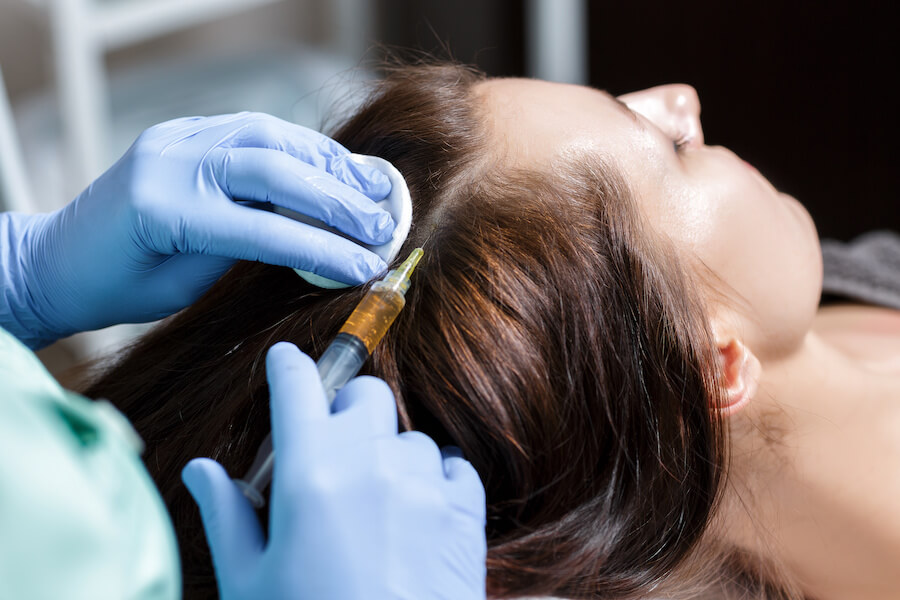
- Platelet-Rich Fibrin (PRF)
- Platelet-Rich Fibrin (PRF)
- Platelet-Rich Plasma (PRP)
- Stem cells
- Scalp Mesotherapy
Platelet-Rich Fibrin – Nowa Estetyka Medical Center in Wrocław
Injection of active fibrin (i-PRF) is the latest discovery in the field of aesthetic medicine – but what exactly is the mechanism behind platelet-rich fibrin?
As skin ages, it loses valuable nutrients as well as collagen and elastin. This results in a noticeable effect of photoaging, loss of elasticity and firmness, and the increasing visibility of wrinkles. The goal of administering active fibrin is to gently enhance wrinkles and stimulate the skin cells for long-term self-regeneration.
Dual Action of Platelet-Rich Fibrin
The immediate effect, which is the reduction of wrinkles, is achieved by forming a mesh of fibrin fibers under the skin. Coagulating fibrin begins to push up the tissues above it, providing a gentle plumping effect. The long-term cell stimulation effect is due to the blood platelets (thrombocytes) trapped between the fibrin fibers.
Thrombocytes continuously, though slowly, release the growth factors stored within them. This leads to increased proliferation of endothelial cells, improving blood circulation and nourishing the tissues. Fibroblasts are also activated, resulting in the synthesis of new collagen – the primary factor responsible for skin firmness and elasticity.
The mechanism of action for i-PRF active fibrin therapy can be compared to platelet-rich plasma (PRP) therapy. However, a significant difference exists in the way growth factors are released from the blood platelets. The slow and sustained release during platelet-rich fibrin therapy ensures a much better result than the sudden release that occurs in mesotherapy.
Cells are continuously stimulated, eliminating the need for frequent renewal of the “stimulating signal,” and the effect lasts for up to 2 years.
| Procedure Duration | about an hour |
| Anesthesia | local |
| Recovery | patients can return to work immediately |
| Results | up to 2 years |
| Safety | high |
| Complications | none |
| Indications | deep wrinkles, tissue loss, acne scars |
iPRF Procedure Overview
The platelet-rich fibrin injection is performed under local anesthesia. Thirty minutes before the injection, a cream containing anesthetic ingredients is applied to the treatment areas to ensure maximum comfort during the procedure.
A small amount of blood is drawn by the doctor, separated, and the resulting solution is collected into a syringe with a micro-needle, whose pricks are almost imperceptible.
The entire procedure lasts about 60 minutes.
It is recommended to use active fibrin treatment in conjunction with other therapies, such as CO2 fractional laser.
Contraindications
Treatments requiring the use of the patient’s own blood, i.e., autologous material, are considered some of the safest aesthetic medicine procedures due to the minimal risk of allergic reactions or intolerance.
Contraindications for the procedure include:
- autoimmune diseases
- pregnancy and breastfeeding
- cancer
- certain blood disorders